These three California gum plants — Great Valley gum plant (
Grindelia camporum), hairy gum plant (
G. hirsutula) and Oregon gum plant (
G. stricta var.
platyphylla) — have many things in common. All are easy, tough, dependable and fast-growing, long-blooming plants perfect for a drought-tolerant garden. Gum plant, also called gumweed, provides cheerful summer color and quality food for pollinators when other native plants are dormant.
Bright yellow 2- to 2½-inch daisy-like flowers can emerge as early as late spring, then profusely bloom throughout the summer and into the fall. The leathery evergreen foliage — reminiscent of succulents — is ruggedly handsome. Gum plants’ interesting buds each hold a blob of sticky resin, which protects the plant from predators. This gummy substance gives gum plants their name.
Not in California? Browse plants native to other regions of the U.S.
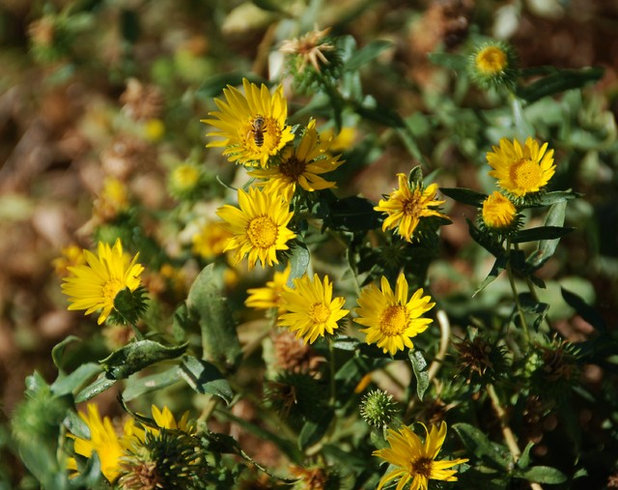
Pete Veilleux, East Bay Wilds
Botanical name: Grindelia spp.
Common names: Gum plant, gumweed, gumplant
Soil requirement: This plant is adaptable.
Benefits and tolerances: All three species, including
G. camporum, shown here, benefit native bees, pollinators, butterflies and birds. They’re good on hillsides for erosion control; tolerate sandy, salty, rocky, loam and clay soils; tolerate seaside conditions and drought; and are deer-resistant.
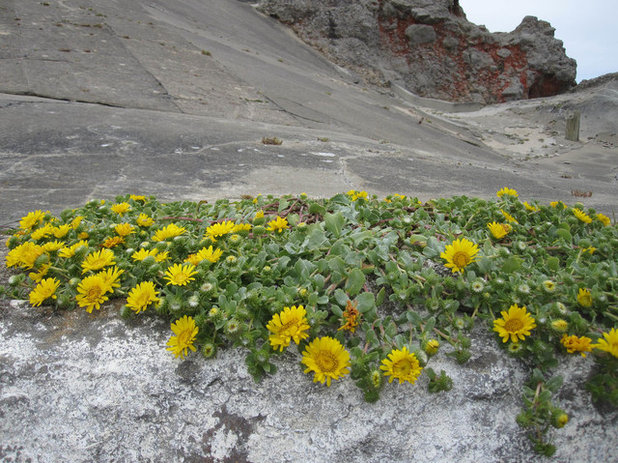 Seasonal interest:
Seasonal interest: All three species have golden summer flowers;
G. stricta var.
platyphylla’s are
shown here. Gum plants attract many interesting and beautiful pollinators and butterflies.
When to plant: Late fall is ideal; winter works well; spring is acceptable; summer can be challenging to all but the most experienced gardener.
Photo by Alex Lomas
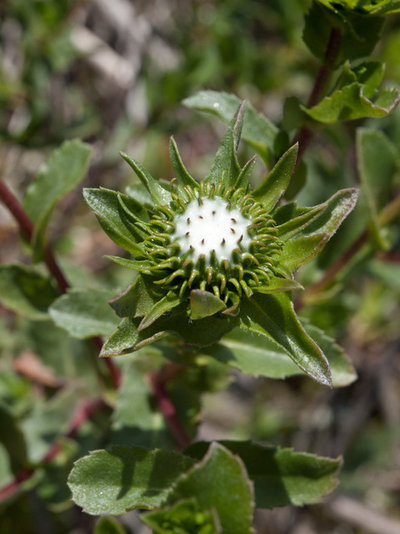 Distinguishing traits.
Distinguishing traits. Gum plants have 2- to 2½-inch yellow daisy-like summer flowers with handsome evergreen foliage. Their sticky resin, shown here on
G. hirsutula,
gives them their name. Drought-tolerant and highly attractive to beneficial insects, gum plants are great additions to dry habitat gardens.
Photo by Franco Folini

Las Pilitas Nursery
Wildlife value. Gum plants provide quality pollen and nectar throughout the growing season for a number of species of butterflies and native bees.
We all know that our pollinators have been declining in numbers; bee-friendly gardens can help create havens for these pollinators, including native bees and butterflies, like the checkerspot butterfly shown here on
G. camporum. Gardening for pollinators can combat the fragmentation and degradation of their habitats.
While a mainstay for pollinators during the hottest part of the year, gum plants’ winter seeds also provide food for birds and other small animals.
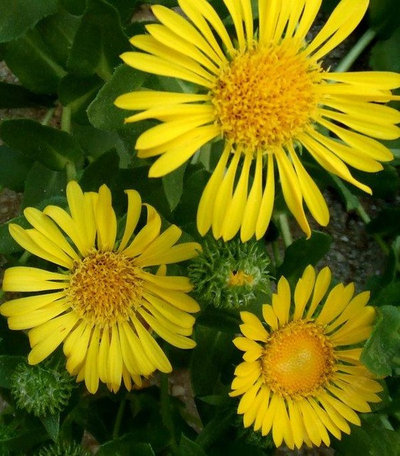
Las Pilitas Nursery
How to use it. Use gum plants in dry and sunny borders, as hillside stabilizers, in meadows or in mixed borders. They make a great summer statement when planted with other summer bloomers, such as California goldenrod (
Solidago californica), California buckwheat (
Eriogonum fasciculatum), naked buckwheat (
E. nudum) and Santa Cruz Island buckwheat (
E. arborescens), and are spectacular with red-flowering California fuchsia (
Epilobium canum, syn.
Zauschneria californica).
Planting notes. Deadheading
G. stricta var.
platyphylla,
shown here, and the other species will increase flower production. Otherwise only a light pruning for shape in the fall is needed.

Pete Veilleux, East Bay Wilds
Great Valley Gum Plant(
Grindelia camporum, syn.
G. robusta,
G. procera)
Origin: Native to California and Baja California, Mexico
Natural habitat: Alkali sinks, grasslands, central oak woodlands, dry washes and chaparral; below 4,000 feet in elevation
Where it will grow: Easily hardy to 20 degrees Fahrenheit, or minus 7 degrees Celsius, and can tolerate down to 0 degrees Fahrenheit, or minus 18 degrees Celsius (USDA zones 7 to 10; find your zone)
Water requirement: Once established, water every four weeks or not at all; highly drought-tolerant
Light requirement: Full sun
Mature size: 18 to 24 inches tall and wide
Benefits and tolerances: Alkaline soils
Great Valley gum plant does well in full sun in both cool coastal and hot interior locations. It is highly drought-tolerant after it’s established. Its upright stems grow to 18 to 24 inches tall and wide, with bountiful blooms.
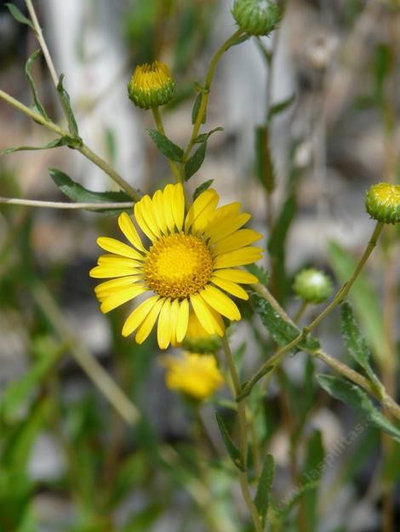
Las Pilitas Nursery
Hairy Gum Plant
(
Grindelia hirsutula)
Origin: Native to California and much of Canada
Natural habitat: Coastal sage scrub and central oak woodlands
Where it will grow: Hardy to 10 degrees Fahrenheit, or minus 12 degrees Celsius (zones 8 to 11)
Water requirement: Once established, water every 10 to 14 days to as little as no summer water; somewhat drought-tolerant; does best in areas that are wet in the winter and dry in the summer
Light requirement: Full sun to partial shade
Mature size: 2 feet tall and wide
Benefits and tolerances: Serpentine soils
Hairy gum plant is very adaptable to watering schedules, handling anything from every 10 to 14 days to no summer irrigation. It is also flexible in its sunlight needs, tolerating full sun to partial shade. Hairy gum plant seems to be a bit less drought-tolerant than the other species, since in the wild it prefers locations that are wet in the winter and early spring. This plant grows to be 2 feet tall and wide, as a dense multibranching mound of handsome foliage and flowers.
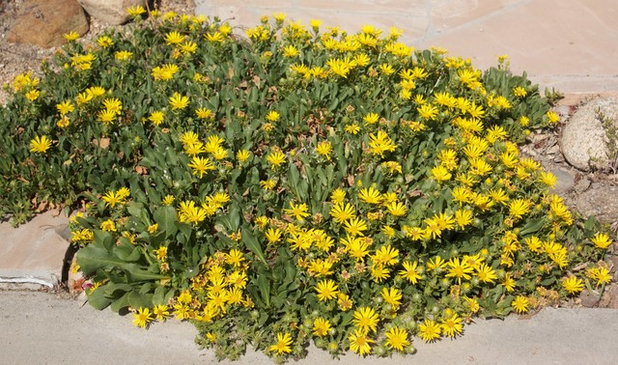 Oregon Gum Plant
Oregon Gum Plant(
Grindelia stricta var.
platyphylla, syn.
G. stricta var.
venulosa)
Origin: Native to the west coast of North America from California to Alaska
Natural habitat: Coastal bluffs, dunes, beaches, marshes and coastal scrub
Where it will grow: Hardy to 20 degrees Fahrenhei, or minus 7 degrees Celsius (zones 9 to 10)
Water requirement: Drought-tolerant after establishment; in transitional regions does best with summer irrigation every 10 to 14 days to every three to four weeks
Light requirement: Full to partial sun in coastal regions; cool partial shade in transitional regions; not for warm interior regions
Mature size: 6 to 36 inches tall and 36 inches wide; typically 12 inches tall or shorter
This spreading gum plant is lovely as a low green ground cover in cooler coastal and transitional regions. It does not do well in warm interior locations. In coastal regions, Oregon gum plant is green all year with little or no summer irrigation. If planted in warmer regions, it will continue to need moderate to occasional summer irrigation after it is established, as it is stress-deciduous. Along with working well in mixed borders and meadows, spreading gum plant is a stunning addition to a dry garden when spilling over a wall or snuggling up to boulders in a rock garden.
Photo by Laura Camp





